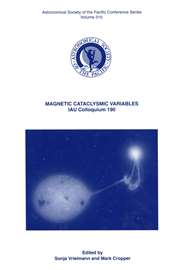No CrossRef data available.
Article contents
Global Astrometric Solutions with Sparse Matrix Techniques
Published online by Cambridge University Press: 12 April 2016
Abstract
Modern astrometric techniques lead to large, linear systems solved by the precepts of least-squares. These systems are usually sparse, and one should take advantage of the sparsity to facilitate their solution. As long as the matrix A of the equations of condition possesses the weak Hall property, characteristic of linear systems derived from astrometric reductions, it is possible to find a sparse Cholesky factor. Before the equations of condition are accumulated, by use of the fast Givens transformation, a symbolic factorization of A using Tewarson’s length of intersection technique determines the ordering of the columns of A that result in low fill-in. The non-null elements are stored in a sparse, dynamic data structure by use of dynamic hashing. Numerical experimentation shows that this competes well with alternatives such as nested dissection, and large, but sparse, linear systems with several thousand unknowns can be solved in a reasonable amount of time, even on personal computers.
- Type
- Section 1. Celestial Reference System and Frame
- Information
- International Astronomical Union Colloquium , Volume 180: Towards Models and Constants for Sub-Microarcsecond Astrometry , March 2000 , pp. 127 - 131
- Copyright
- Copyright © US Naval Observatory 2000


